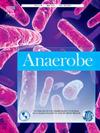Clostridioides (Clostridium) difficile in children and adolescents in the community in Cambodia
IF 2.6
3区 生物学
Q3 MICROBIOLOGY
引用次数: 0
Abstract
Background
Clostridioides (Clostridium) difficile transmission between community and healthcare settings has been increasingly reported. We aimed to identify the prevalence and molecular epidemiology of C. difficile colonising adolescents and non-hospitalised children in Cambodia.
Methods
Stool samples were collected from 266 students at the University of Health Sciences (UHS) in Phnom Penh, between July and August 2022, and 246 children ≥1 year old visiting the outpatient department (OPD) at Angkor Hospital for Children in Siem Reap, between January and August 2022. C. difficile culture, toxin gene detection and PCR ribotyping were performed.
Results
Overall, C. difficile was recovered from 07/266 specimens (2.6 %) from UHS students and 59/246 specimens (23.9 %) from OPD children. The overall prevalence of C. difficile in children peaked in April, and of toxigenic strains peaked in August. Children with loose stools were less likely to be colonised by C. difficile (COR = 0.05, 95 %CI: 0.008–0.32) than children with normal stools. UHS students were colonised only by toxigenic C. difficile. Of the 66 isolates, 36 % (24/66) were toxigenic: C. difficile ribotype (RT) 017 was the most predominant, followed by RTs 012, 046, 056, QX709, 001, 014/020 and QX710. Non-toxigenic strains accounted for 35 RTs including 32 novel RTs that had not been isolated previously.
Conclusions
The findings of only toxigenic strains in adolescents and the high prevalence of C. difficile in OPD children suggest exposure to C. difficile within the community; thus, appropriate interventions may be needed. Genotypic identification of diverse C. difficile is important for molecular epidemiological purposes.
柬埔寨社区儿童和青少年中的艰难梭状芽孢杆菌。
背景:艰难梭菌(clostridiides difficile)在社区和医疗机构之间传播的报道越来越多。我们的目的是确定柬埔寨青少年和非住院儿童艰难梭菌定殖的患病率和分子流行病学。方法:收集2022年7月至8月期间在金边卫生科学大学(UHS)就读的266名学生和2022年1月至8月期间在暹粒吴哥儿童医院门诊部(OPD)就诊的246名≥1岁儿童的粪便样本。进行艰难梭菌培养、毒素基因检测和PCR分型。结果:总体而言,UHS学生和OPD儿童分别从07/266(2.6%)和59/246(23.9%)样本中检出艰难梭菌。儿童艰难梭菌总体流行率在4月达到高峰,产毒菌株在8月达到高峰。大便疏松的儿童比大便正常的儿童更不容易被艰难梭菌定植(COR = 0.05, 95%CI: 0.008-0.32)。UHS学生只被产毒艰难梭菌定植。66株毒株中,产毒株占36%(24/66),以难辨梭菌(RT) 017为主,其次为rt012、046、056、QX709、001、014/020和QX710。非产毒菌株占35个RTs,其中包括32个以前未分离的新RTs。结论:青少年中只有产毒菌株,而OPD儿童中艰难梭菌的高患病率提示社区内存在艰难梭菌暴露;因此,可能需要适当的干预措施。不同艰难梭菌的基因型鉴定对分子流行病学研究具有重要意义。
本文章由计算机程序翻译,如有差异,请以英文原文为准。
求助全文
约1分钟内获得全文
求助全文
来源期刊

Anaerobe
生物-微生物学
CiteScore
5.20
自引率
8.70%
发文量
137
审稿时长
76 days
期刊介绍:
Anaerobe is essential reading for those who wish to remain at the forefront of discoveries relating to life processes of strictly anaerobes. The journal is multi-disciplinary, and provides a unique forum for those investigating anaerobic organisms that cause infections in humans and animals, as well as anaerobes that play roles in microbiomes or environmental processes.
Anaerobe publishes reviews, mini reviews, original research articles, notes and case reports. Relevant topics fall into the broad categories of anaerobes in human and animal diseases, anaerobes in the microbiome, anaerobes in the environment, diagnosis of anaerobes in clinical microbiology laboratories, molecular biology, genetics, pathogenesis, toxins and antibiotic susceptibility of anaerobic bacteria.
 求助内容:
求助内容: 应助结果提醒方式:
应助结果提醒方式:


